“A struggling filmmaker with no money, I turned to photography and fell in love with it,” writes Rich Allen whose fabulous photographs of New York City in the 1970s we see here. “Black & white film cost 79 cents a roll. I’d carry the Pentax, or another camera, all day, every day. I’d take pictures as I rode the streets or went up and down elevators and in and out of buildings. I’d stay up late at night in my studio, processing or printing. Developing the negatives was my favorite, seeing those images of the day appear like magic on the celluloid. Got it! I’d think. As often as not, though, it was the surprises that made it rewarding. A certain picture would stand out, but I could hardly remember why I took it. This is how, little by little, my photography got better.”
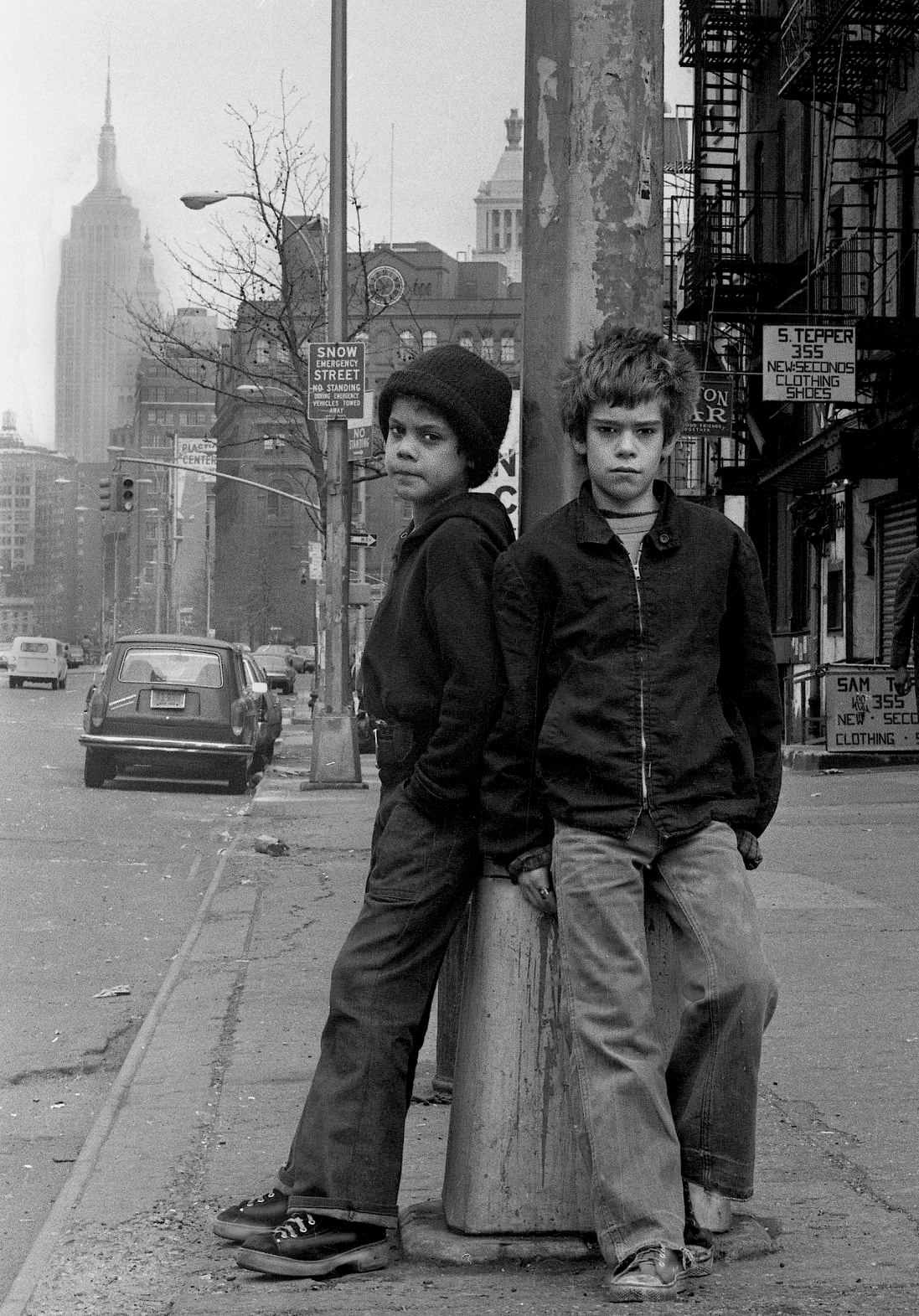
Cooper Union 1976 – © Rich Allen
In 1968, Rich lived in a basement apartment on 3rd St. in the East Village early. He worked as bike messenger in the city for Cosmo Courier (“If you want good work when the sun shines, you have to work when it rains.”), and not long after returned to live at 78 East 3rd Street. Life was tough.
“In NYC, government promises to workers and benefits made in the 60s couldn’t be met, says Rich. “The city had to borrow to make payroll and the ever-increasing payments on money it had already borrowed. By 1975 the city was broke. No one would lend to it. Nobody was picking up the garbage. Mental patients were let out of the asylums, onto the street. The city couldn’t afford to care, prevent the growth of crime, or slow drug abuse. The mentally ill were known as “revolving-door mental patients.” It was a policy. Free to roam the streets until they did something the police had to pick them up for; they’d be sent to Bellevue or jail, wherever, but let out again the next day to save cost. (I could identify with a few of the gentler of these souls).
“To help right the ship there was a big ‘Save New York City’ rally that filled Times Square in 1975 to hear speakers like Woody Allen, Dustin Hoffman and New York’s most famous citizens. After this, Mayor Beame turned to President Gerald Ford, formally plead- ing for a federal bailout to tide the city over. Ford’s answer appeared in huge headlines the next day: “Ford to City: ‘Drop Dead!'”
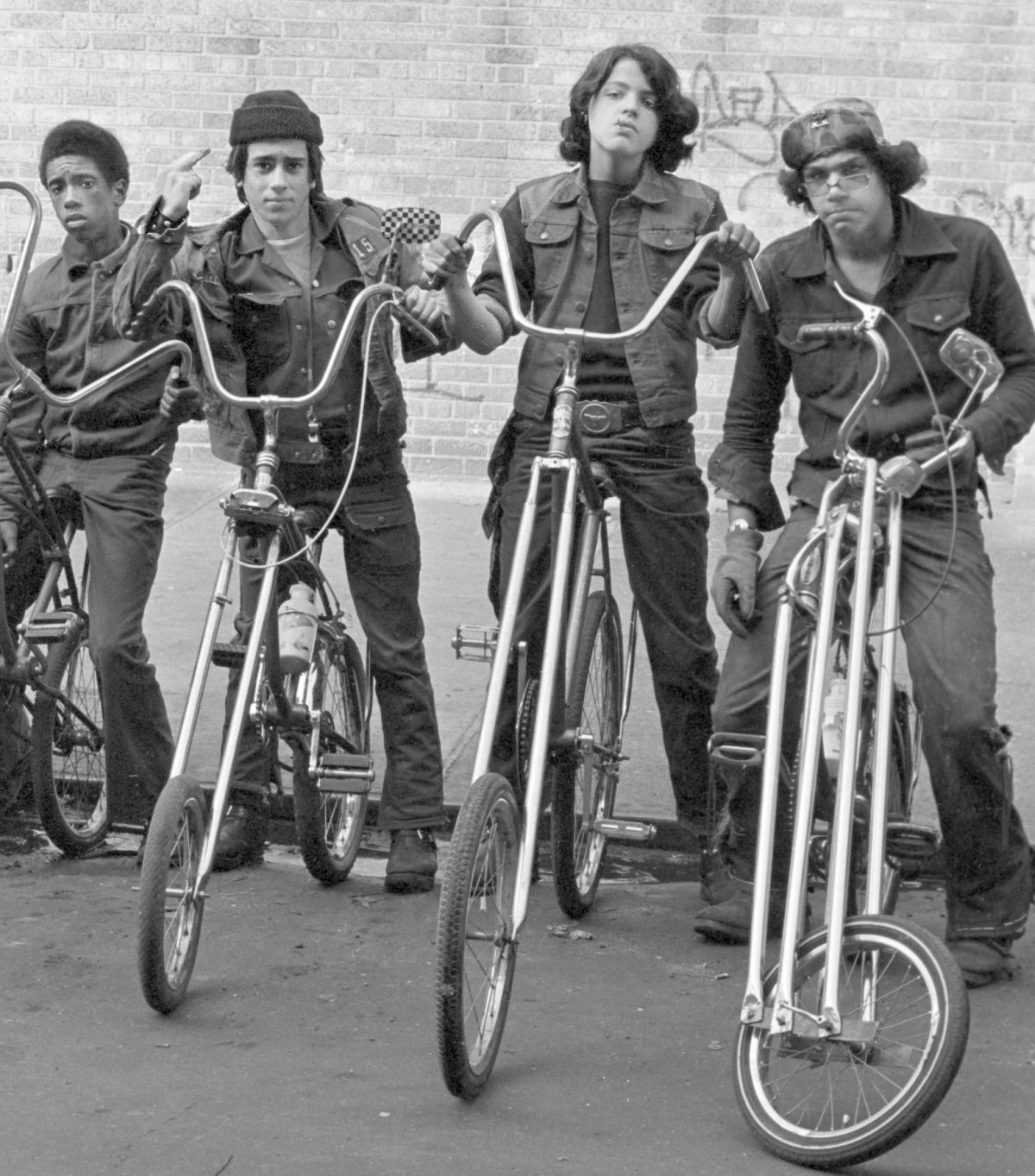
The Four Underage Horsemen from Brooklyn E 3rd St 1974 – © Rich Allen
Over time, many studies found that the refusal to help the city added billions to future budgets, since it eventually did need to address all the problems that not keeping up with the necessities had created. These photographs were taken primarily from 1973-1977. It was a gritty, real, mostly B&W New York. The pictures and people you see here could only come from this city, at this particular time.
Some pictures are from “The 3rd St. Film Club,” which he began on the weekends while taking pictures with the local kids in the empty lot at 76 E. 3rd St. The Hell’s Angels have set up cross the street. After a battle of wills and fisticuffs, they take over the lot where children play and bolt it closed – with the police’s blessing. One day, he deliver to Ernst Hass, “an all-time great and a Holocaust survivor. He invites me into his home near Carnegie Hall and he introduces me to his wife. He then took time to look at pictures I’d taken of my son and talk about photography. He died a few years later, far too young.”
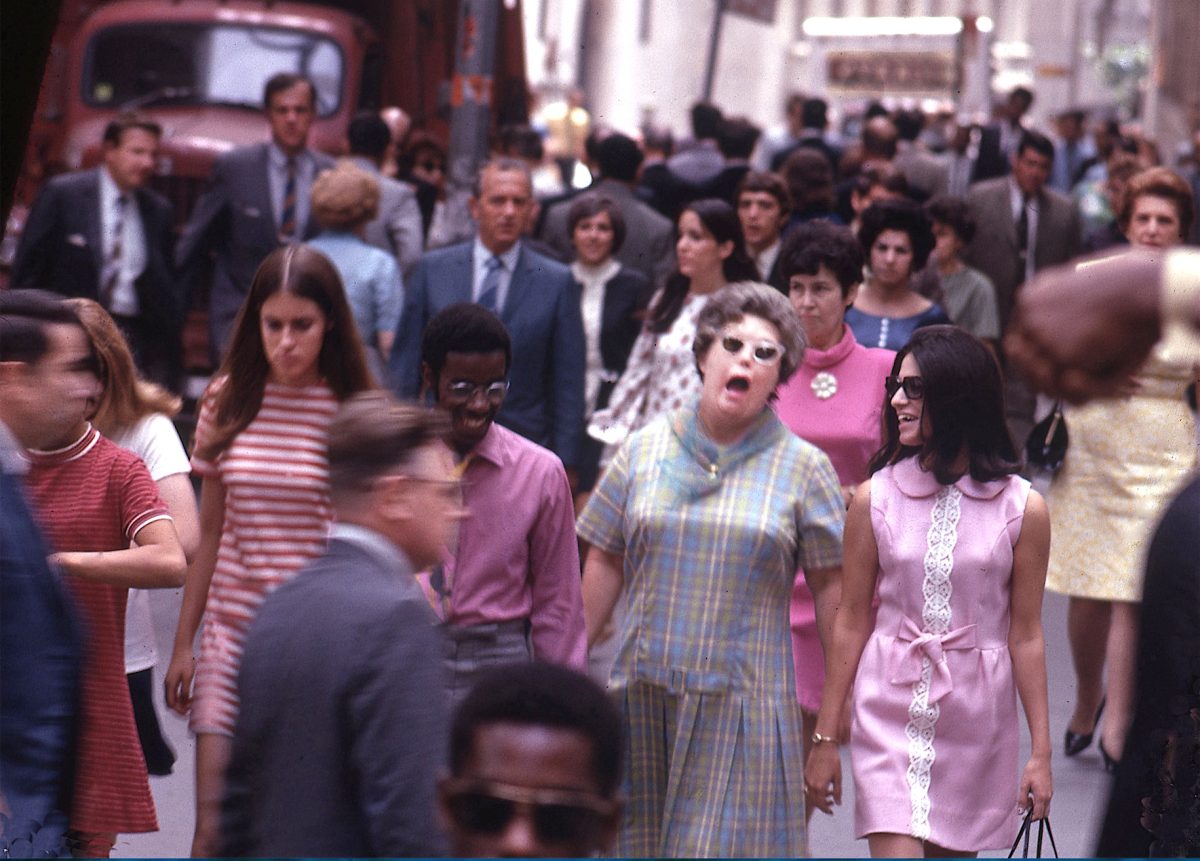
Wall St Downtown 1970 – © Rich Allen
Playing Hooky in NYC
In the spring of 1975, I received a CAPS film fellowship…. For some time I’d been taking pictures of the kids in the neighborhood. The Greek kids, John, his brother George, their friends Johnoco, Nico, and sisters Dona and Christina, were all from wonderful and loving families… The kids and I would congregate in the empty lot at 76 E. 3rd and take pictures. They sometimes borrowed an old camera of mine and took pictures of themselves climbing the back wall or building a fire in an ash can. The Greek kids and their other friends Andre and Nick always called me “Kent” – I’m still not sure why, but think it might have something to do with “mild- mannered reporter.” The Puerto Rican kids called me “Scorpio.” To the Blacks I was “Rigid.” And to everyone I was also “Picture Man” – “Hey Picture Man, take me a picture,” they’d yell.
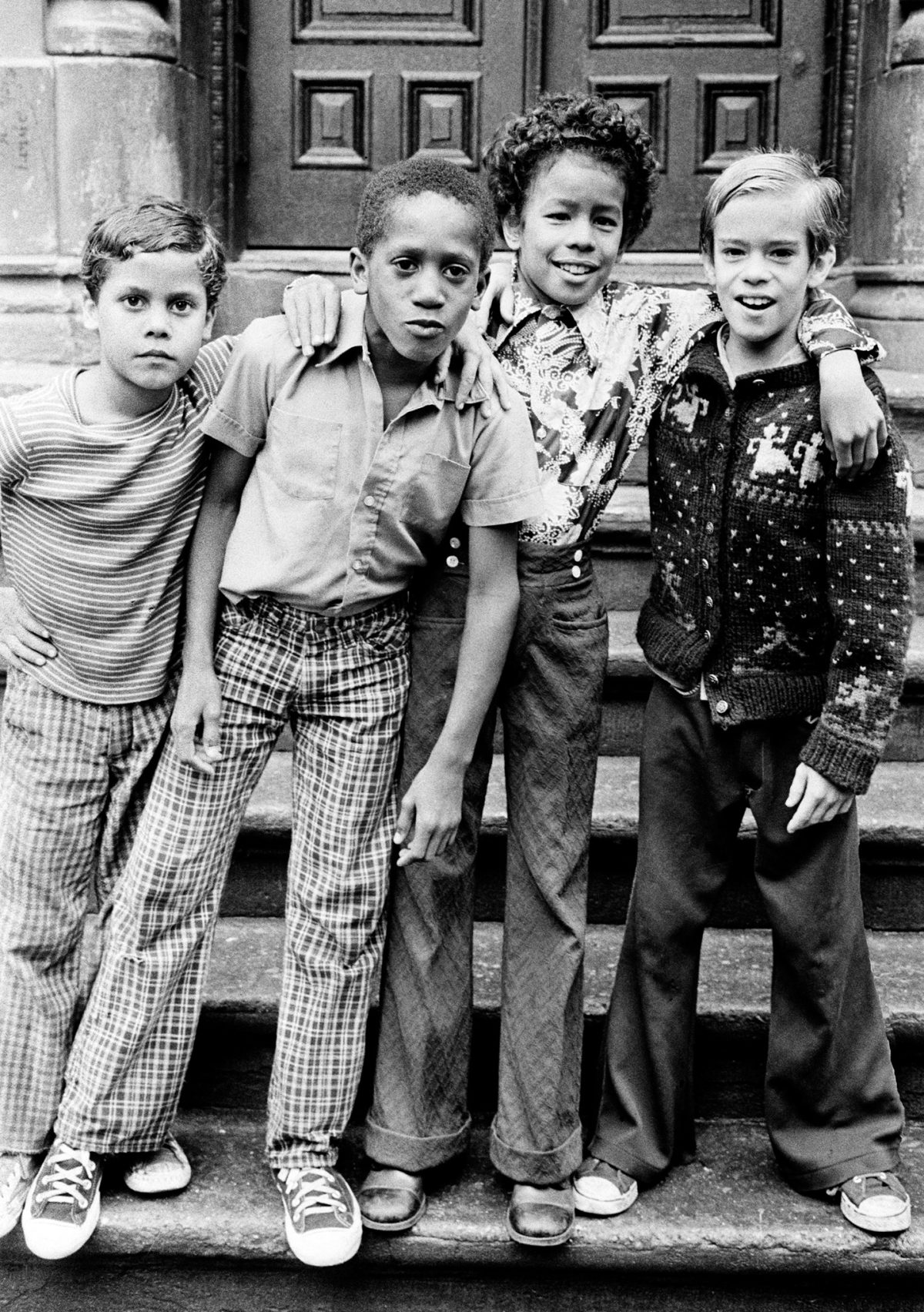
Orlando, Jeffrey & Fernando E 3rd St 1975 – © Rich Allen
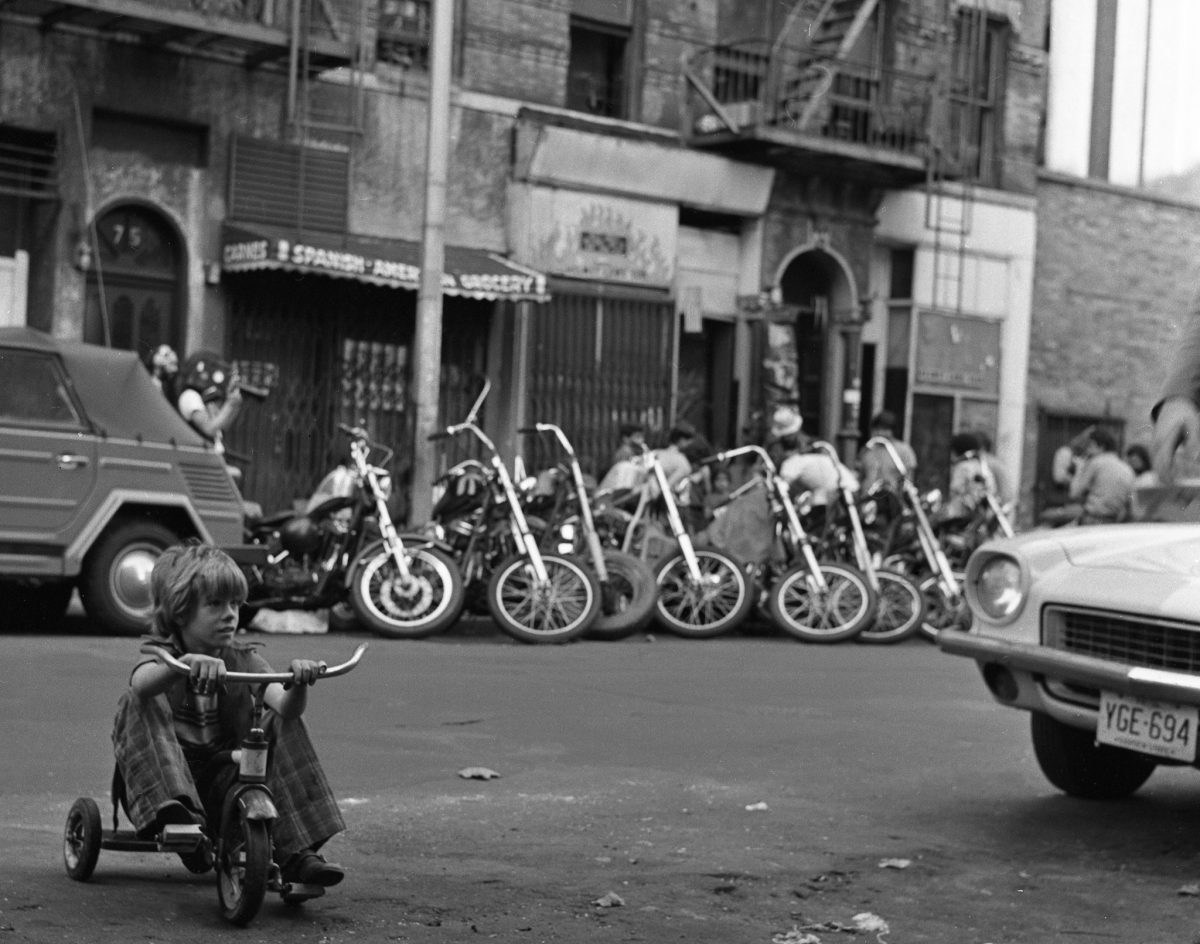
Fernando’s Bike E 3rd St 1974 – © Rich Allen
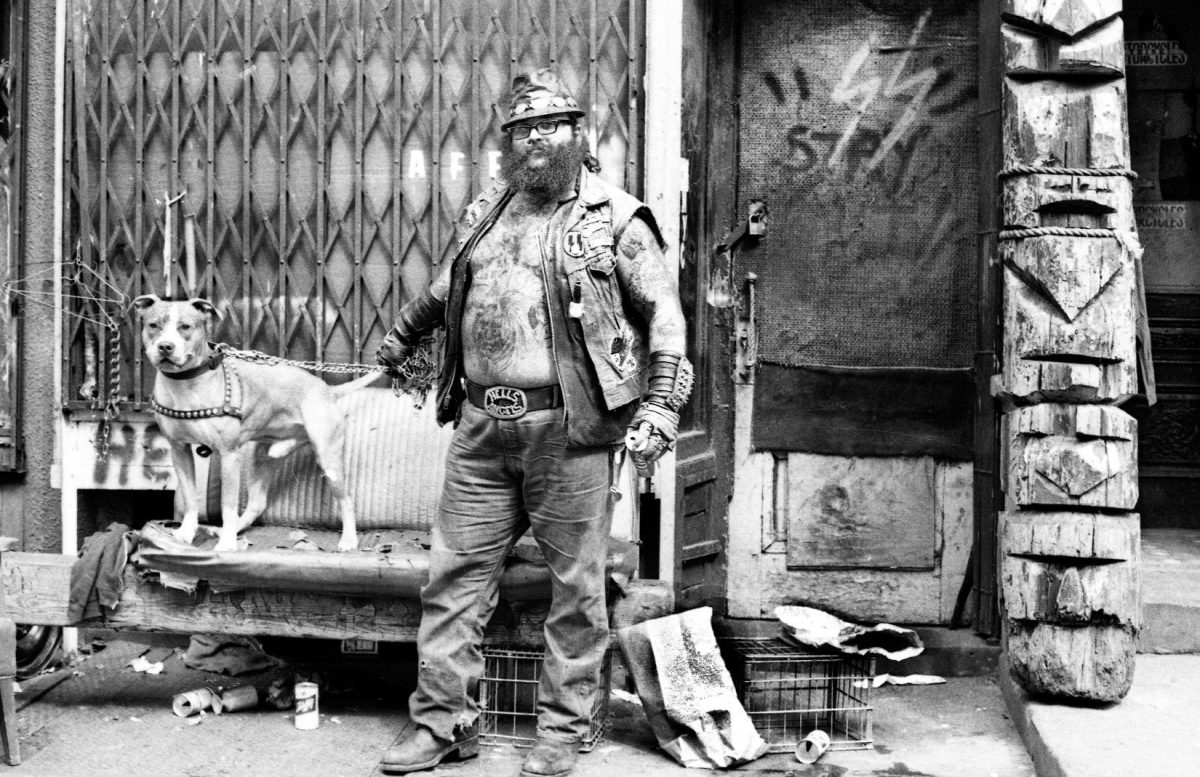
Big Vinny E 3rd St 1974 – © Rich Allen
On The Streets with Fernando
The boy I had been following in particular was Fernando Madrid, one of Lydia Madrid’s six kids. Fernando played hooky a lot; I’d see him. I began working on a photographic essay called Hooky. There were also his half-brothers Orlando and Estebe, his sisters Juanita and Maria, Daisy and other family members at 74 E. 3rd St. After a failed attempt to mount a production of the short film script I was developing, using professional actors (I was supposed to make a film with the grant money), I decided to change my plans and make a film about Fernando and Orlando playing hooky. It was soon summer when every day was like playing hooky to them. I began to just follow them around with a wind-up movie 16mm camera, not directing or asking them to pose much, but watching and recording them moving through the environment like little fry learning to swim in the stream.
Often Jeffery, a 3rd St. friend, came along. They walked the whole lower East Side, or across town to the West Village to an outdoor free pool. Then, across the Williamsburg Bridge to Brooklyn. Soon they were hopping the subway. They’d ride for a while, then… get off. Once they got off in Chinatown. It was like coming out on the other side of the world! From there they walked down Broadway’s canyon, past Wall Street, out to where lower Manhattan and Battery Park overlooked the bay and the Statue of Liberty. Until he crossed the East River, the most water Fernando had ever seen was in a bath- tub. But here he looks out at this great saltwater bay, and he turns to me and says, “How’d they get all the water in here?”
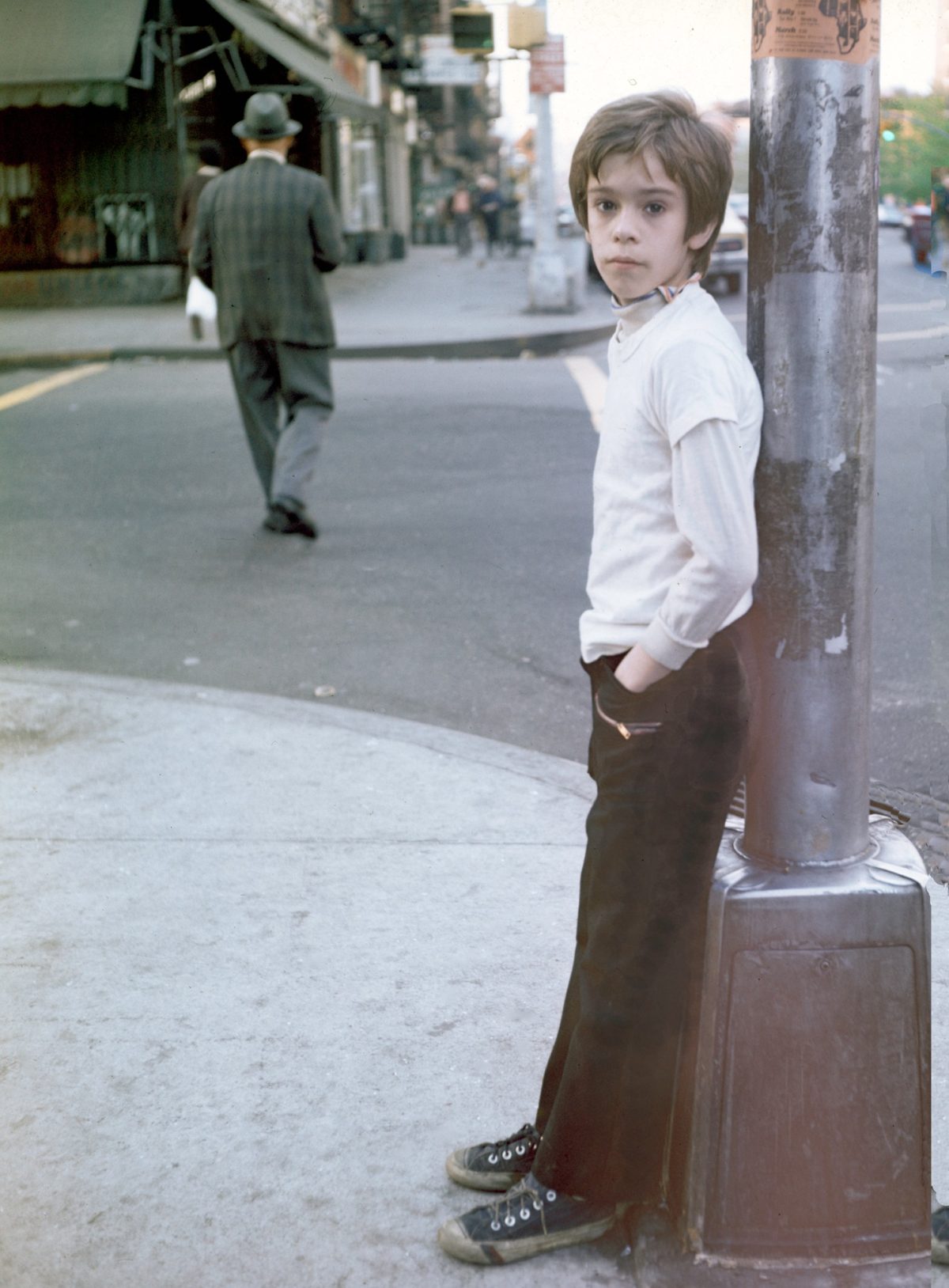
Fernando First Ave at 3rd St 1974 – © Rich Allen
A lot of film and pictures were taken in the old vest-pocket park at 76 East 3rd St. It’s basically become an empty lot since the city can’t maintain a park. The Hell’s Angels are directly across on the north side of the street. One day they had a young pet crow and it escaped and flew into the park. Fernando’s sister, Juanita, made friends with it by giving it water to drink. She called it Agua and the crow would cry “agua” when it wanted water. Only Juanita could touch and pet it. With anyone else, it would bite them or fly off, but Agua would stand on Juanita’s shoulder like he was her best friend. The Hell’s Angels wanted the crow back and even offered money if she returned it, but she refused. Then they de- manded she give it back. She refused and never gave Agua back.
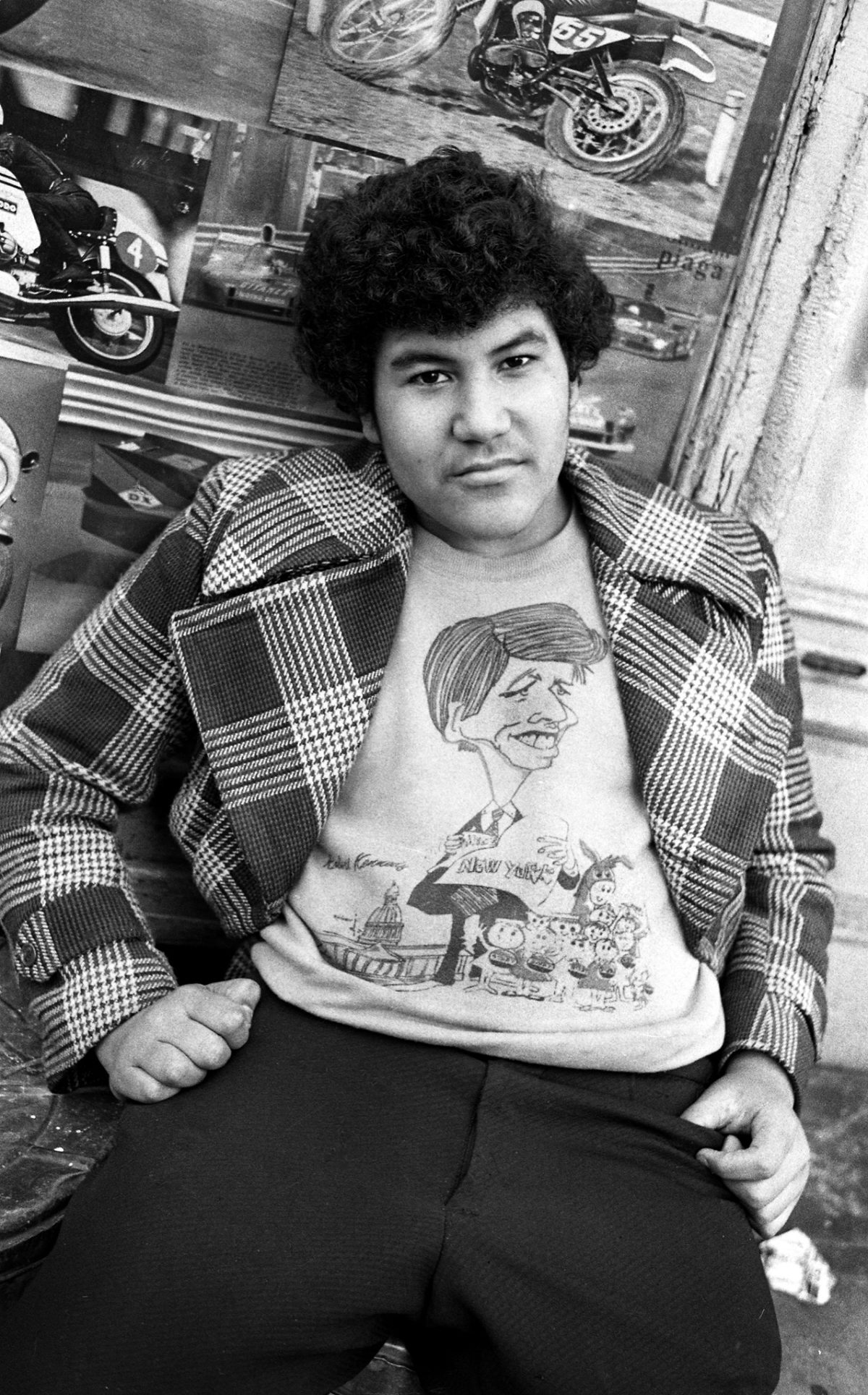
Big Fernando E 3rd St 1974 – © Rich Allen
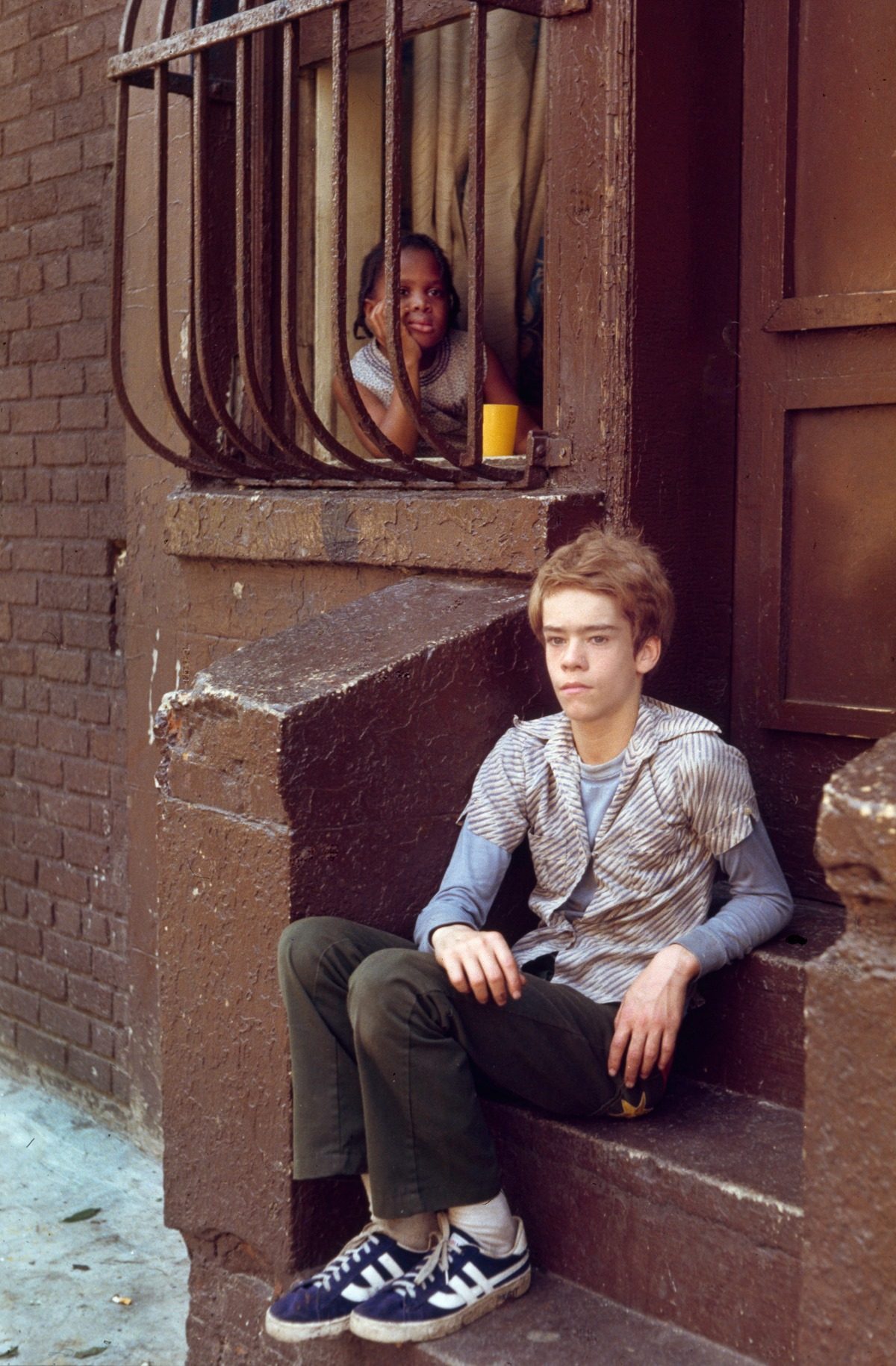
Mary and Fernando E 2nd St 1976 [new scan]- © Rich Allen

Fernando Rivington St LES 1975 – © Rich Allen
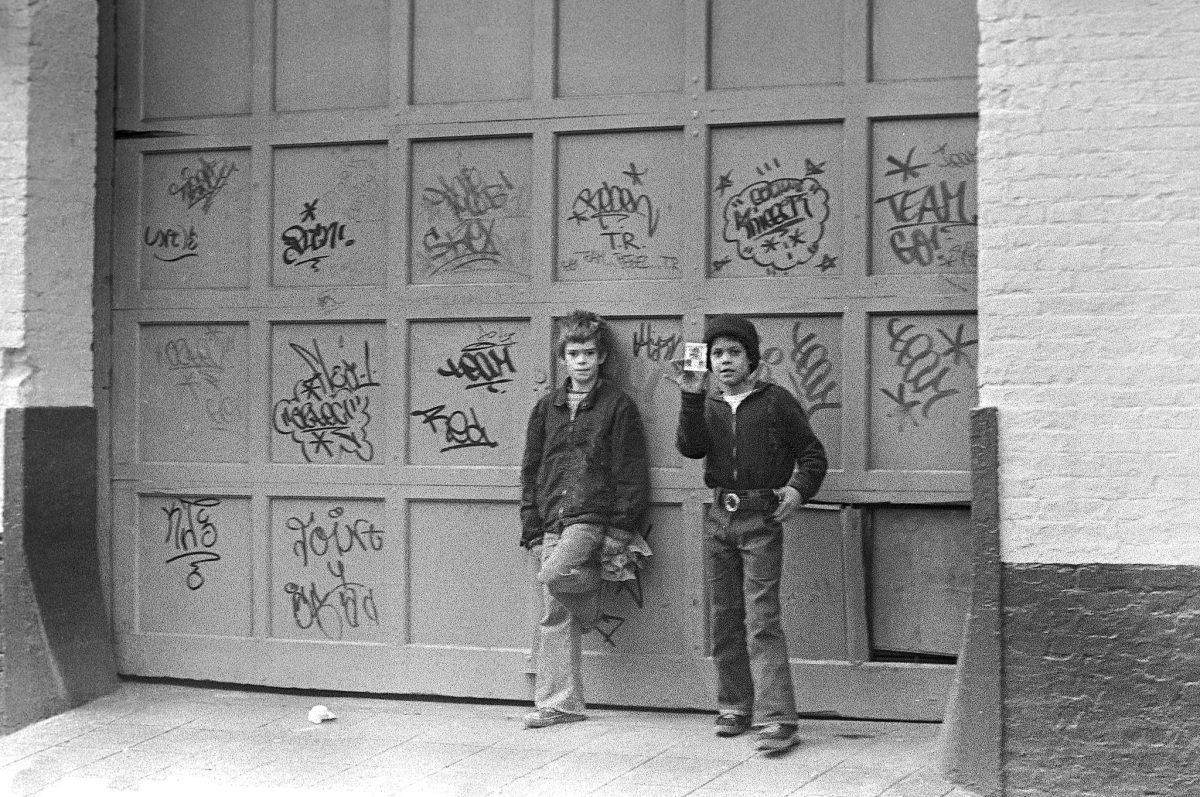
Fernando y Orlando East Village 1976 – © Rich Allen
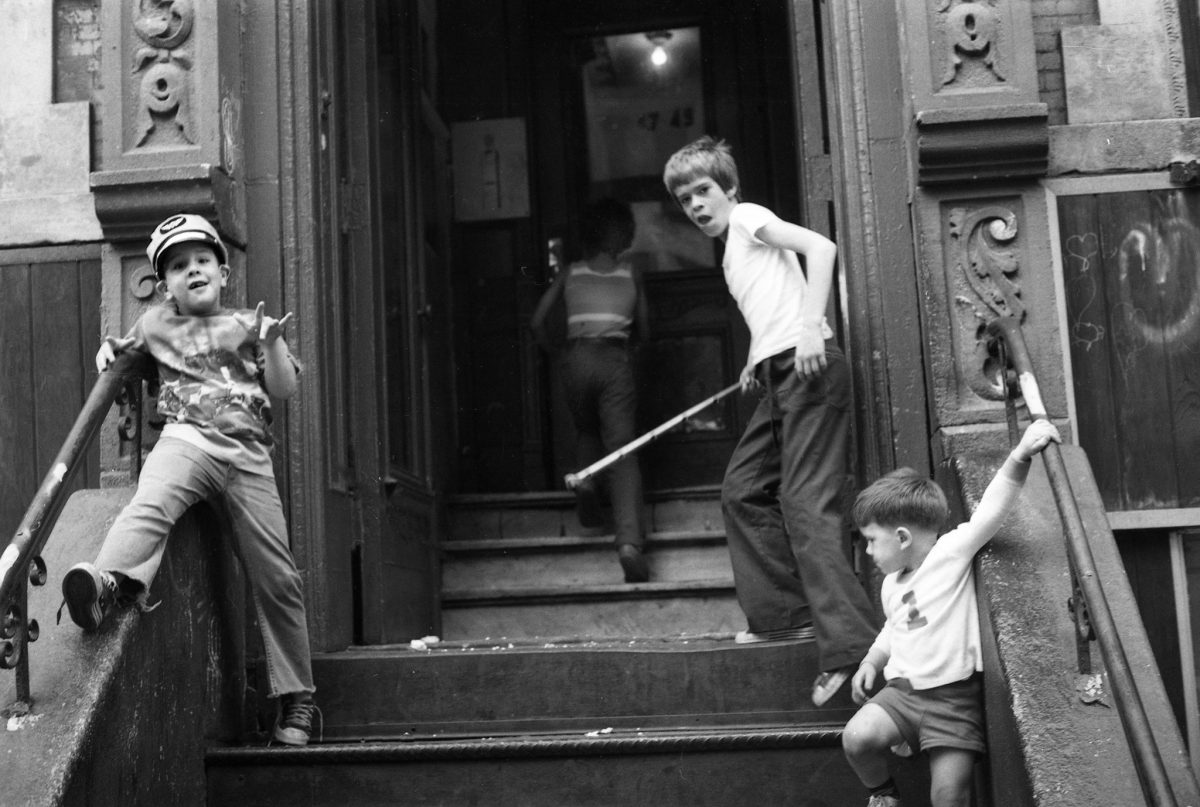
Lil Steve, Orlando [walking away] Fernando and? E 3rd St 1975 – © Rich Allen
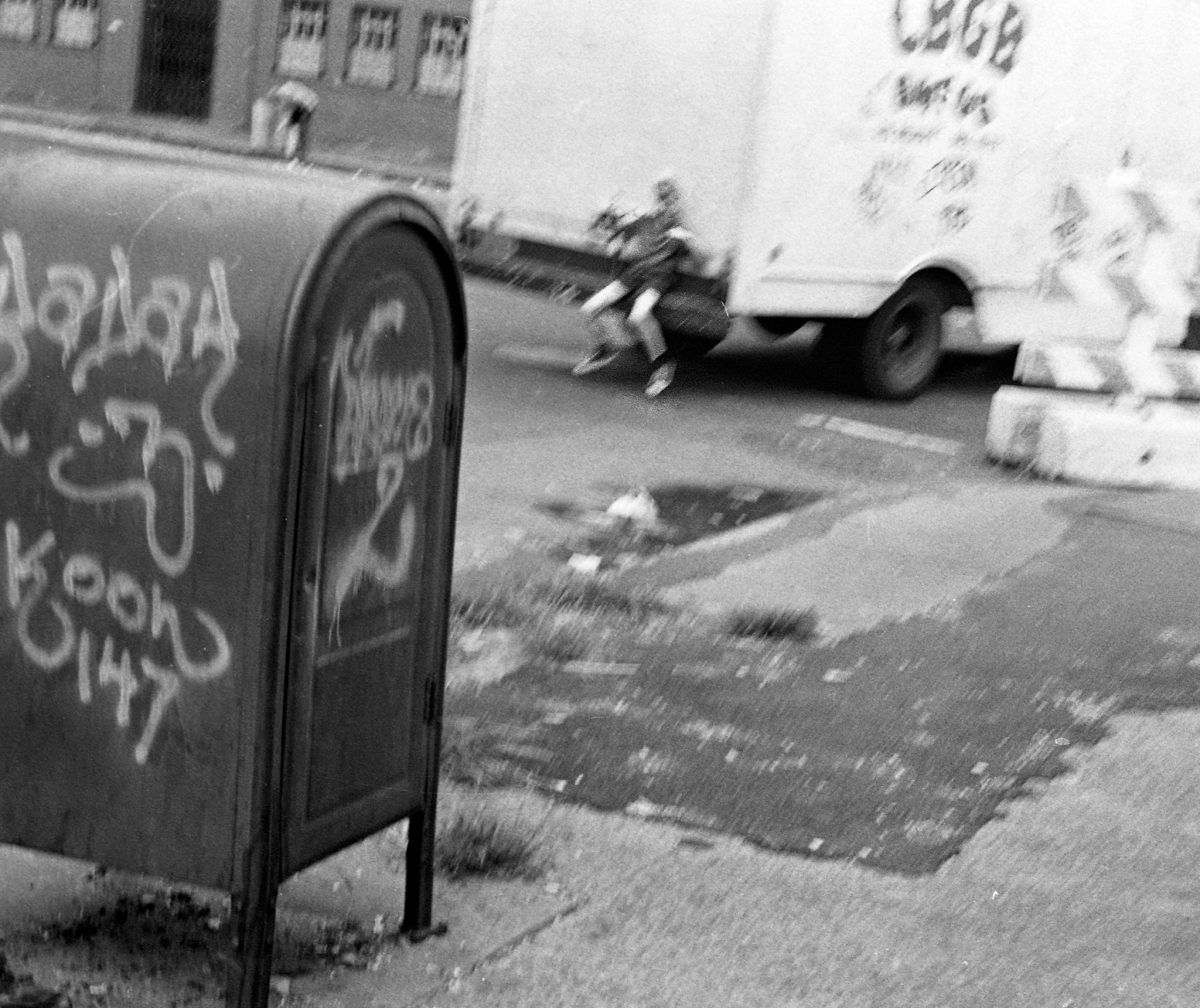
Fernando Goes for a Ride East Village 1975 – © Rich Allen
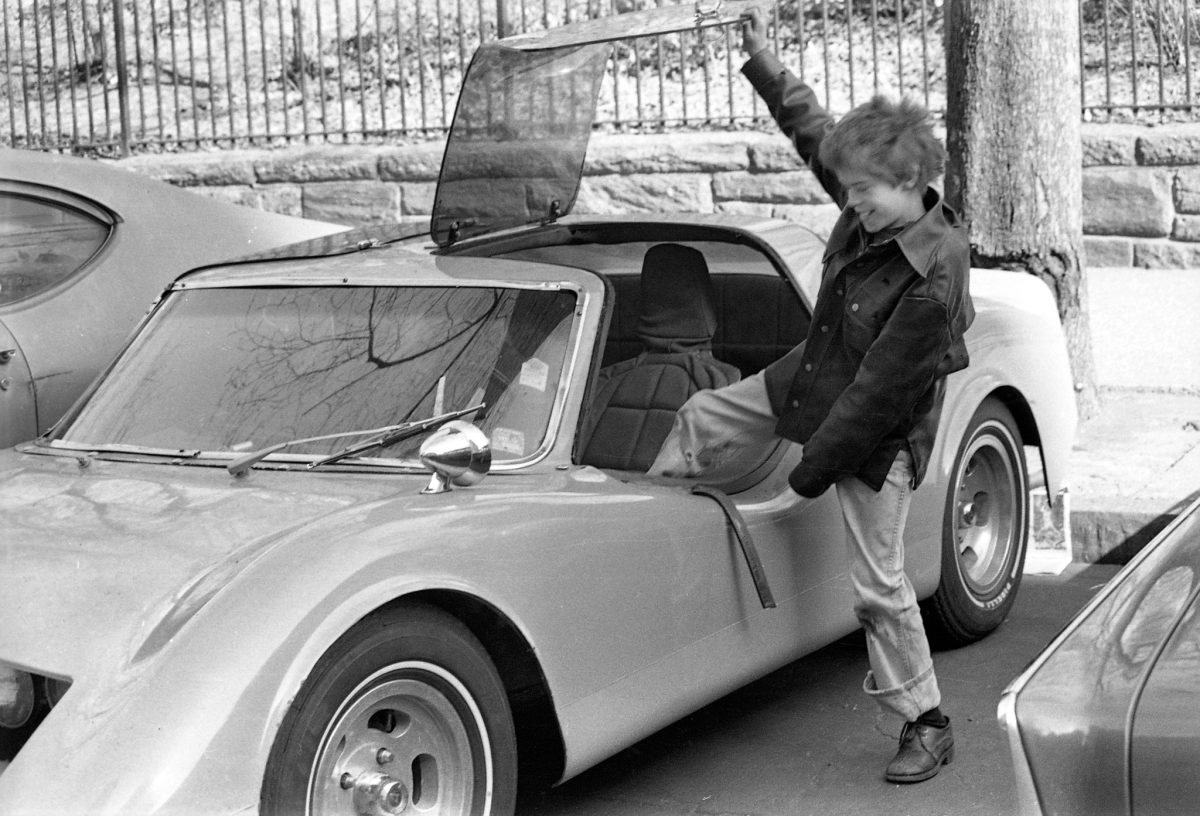
The Defenders E 3rd ST 1975 – © Rich Allen

Fernando y Mirror 1st Ave 1974 – © Rich Allen
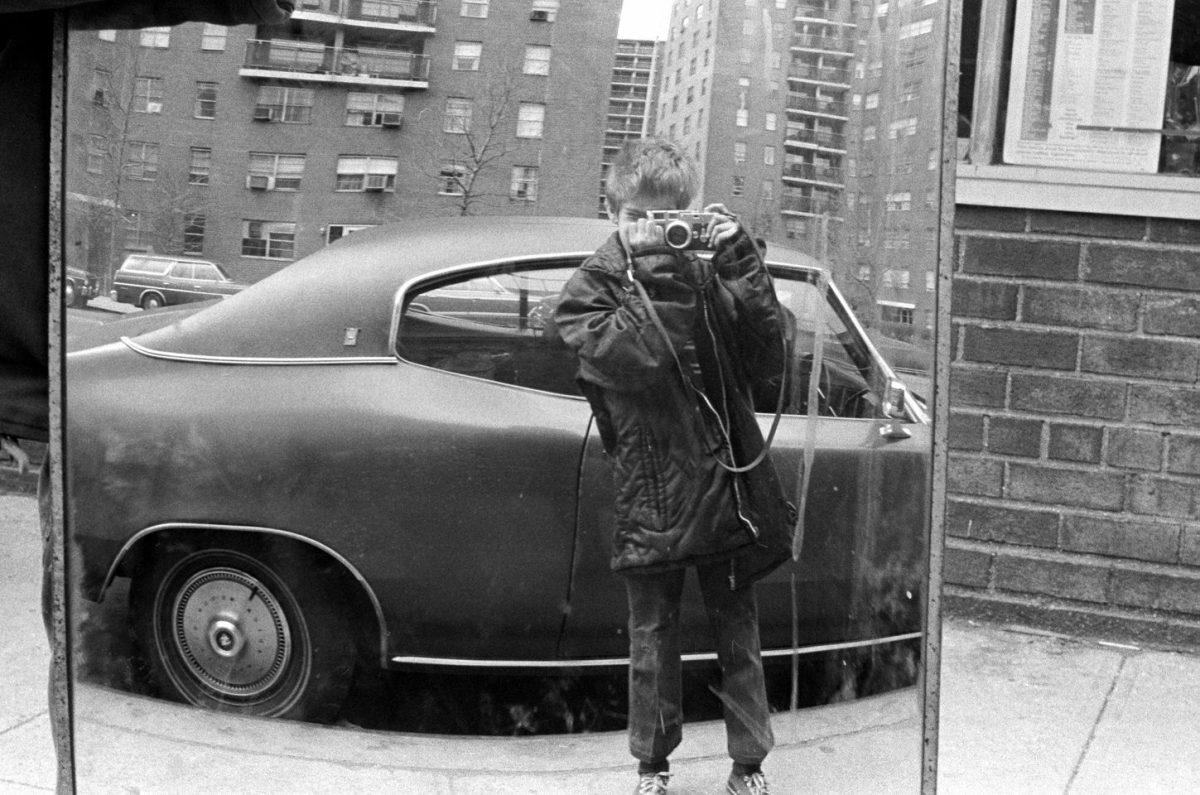
Fernando and Mirror 1st Ave 1974 – © Rich Allen
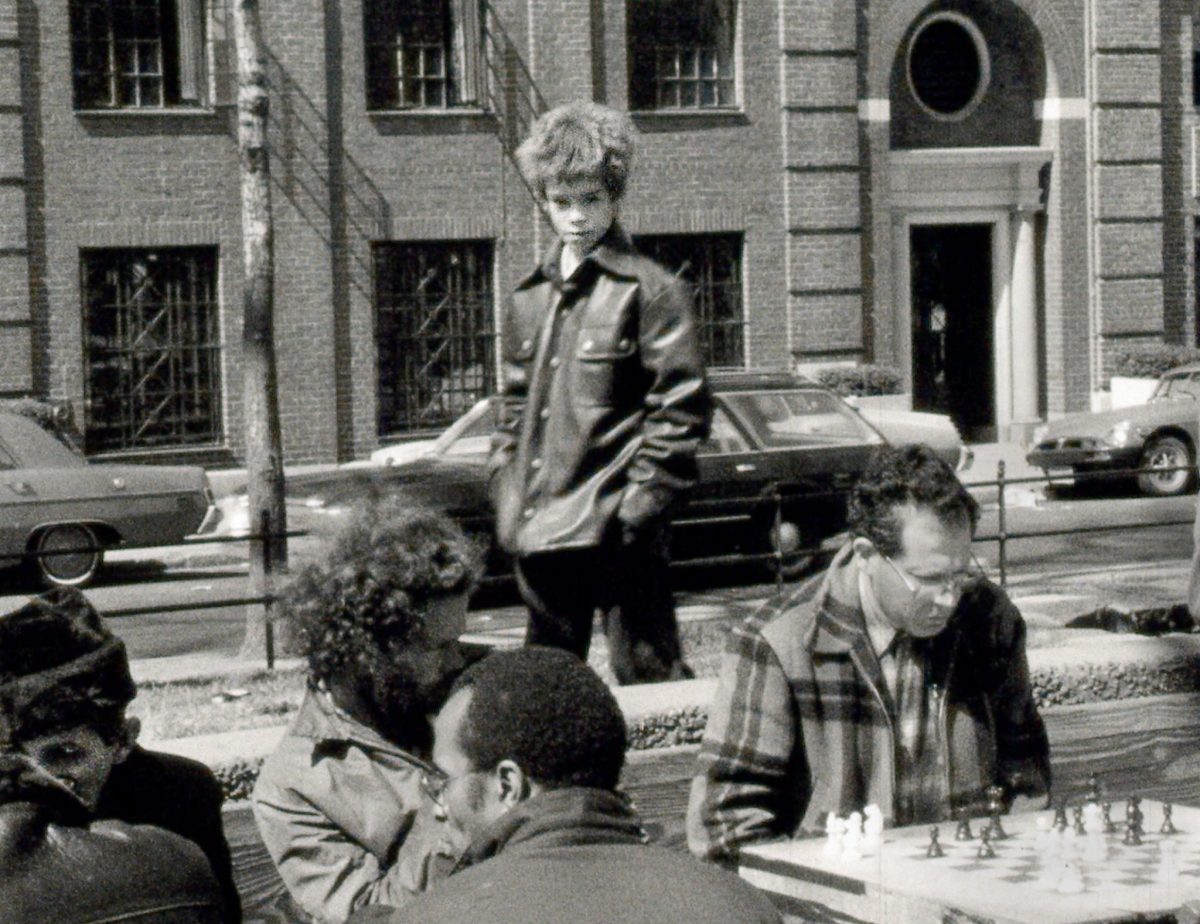
Fernando Washington Square 1976 – © Rich Allen

74 E 3rd St a after the fire – Fernando and everyone must move. The park at 76 E 3rd is Hells Angels turf, the battle is now over. April 1976 – © Rich Allen
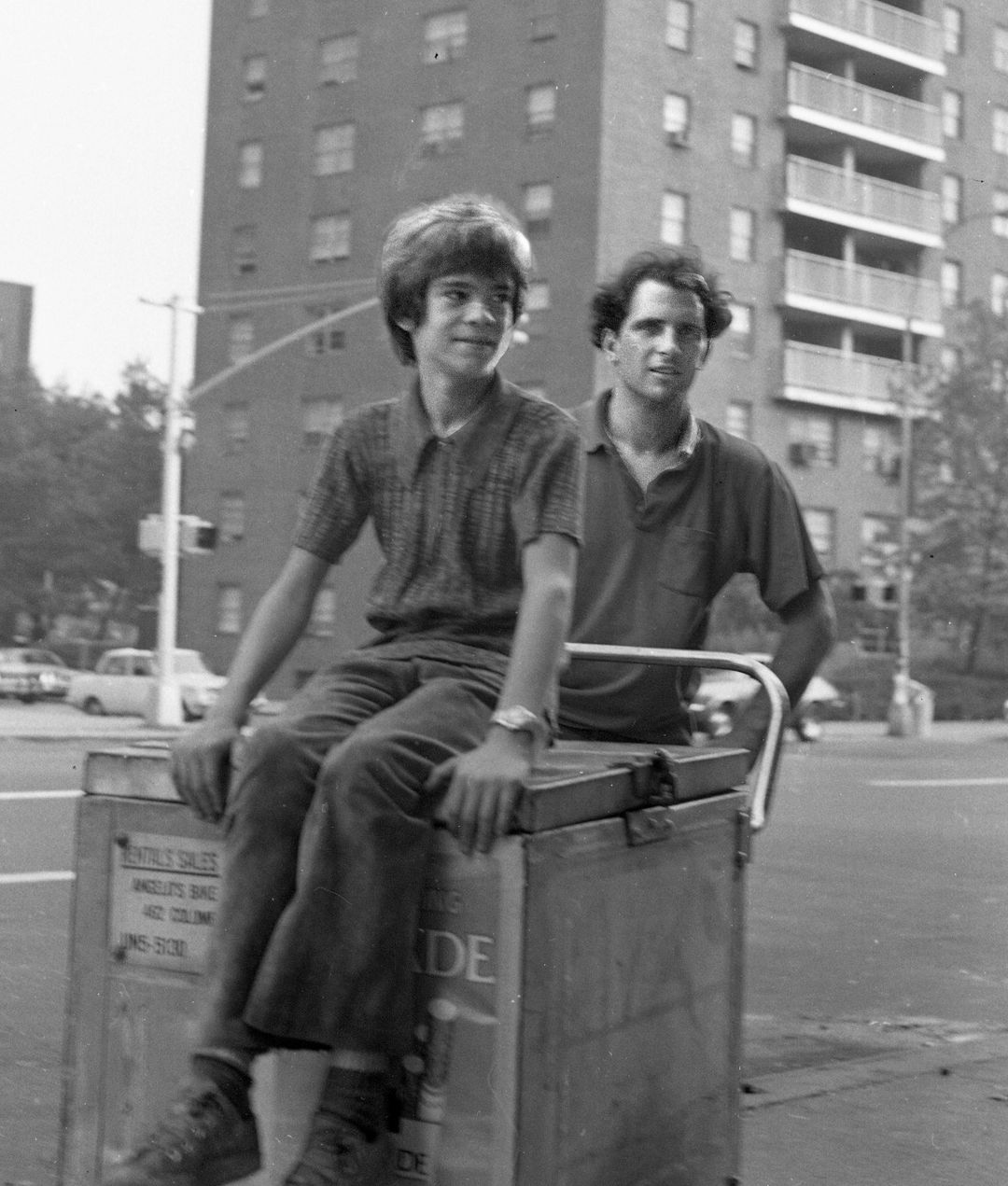
Fernando y Rich on Cart Bike 1975 – © Rich Allen
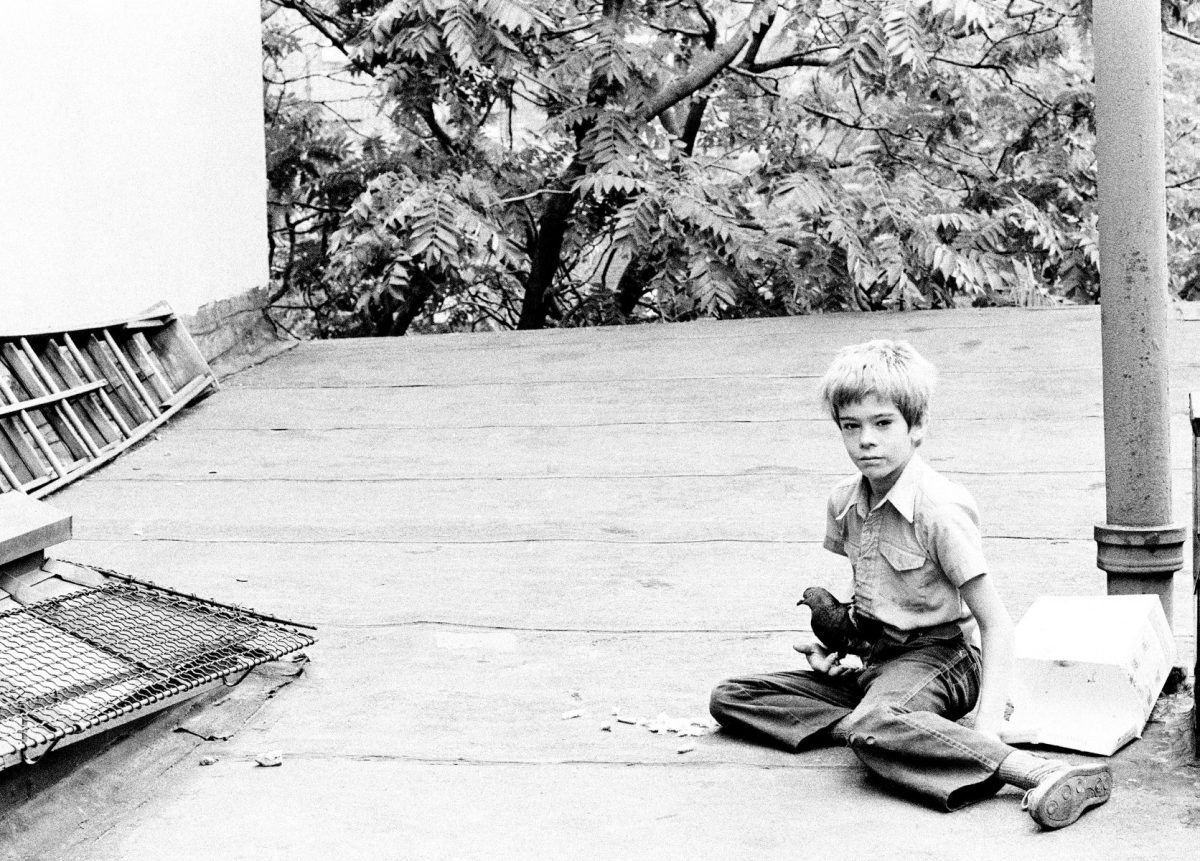
Fernando, 10 am first week of school 1973 – © Rich Allen
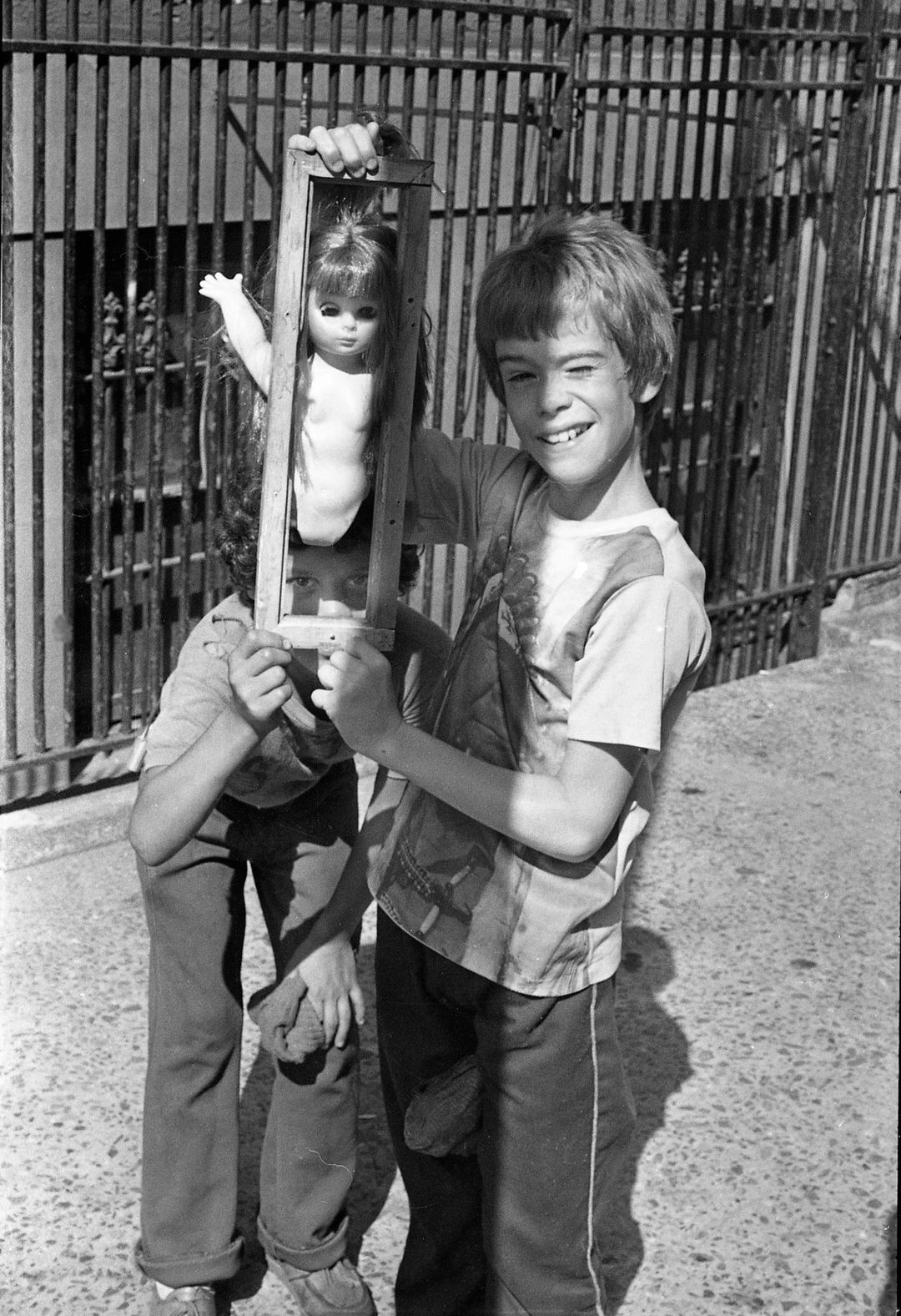
Fernando y Orlando Making Modern Art E 3rd St 1976 – © Rich Allen

Fernando E 3rd St 1974 – © Rich Allen

E 3rd St 1975 Photo by Fernando Madrid – © Rich Allen
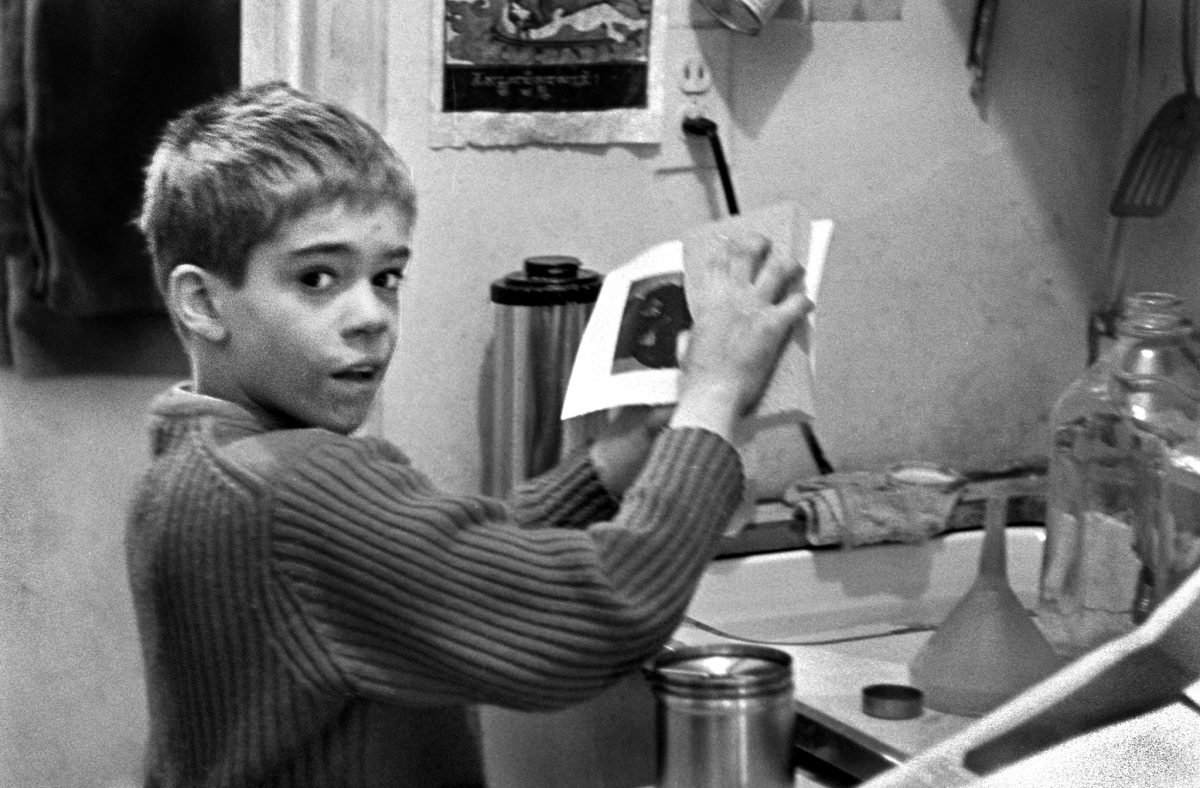
Washing Prints Fernando E 3rd St 1975 – © Rich Allen
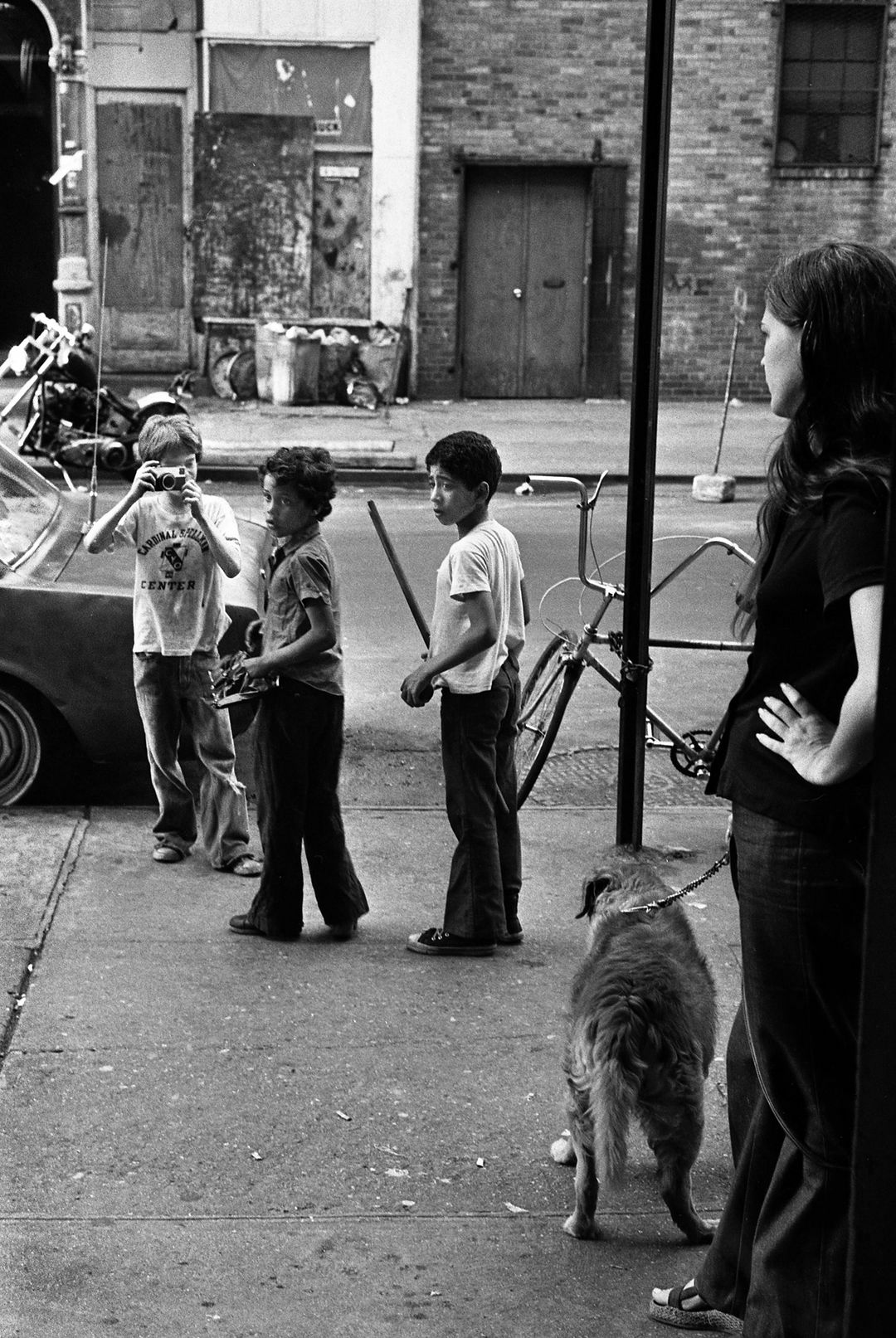
Fernando’s Rollie Orlando Pipo E 3rd St 1975 – © Rich Allen
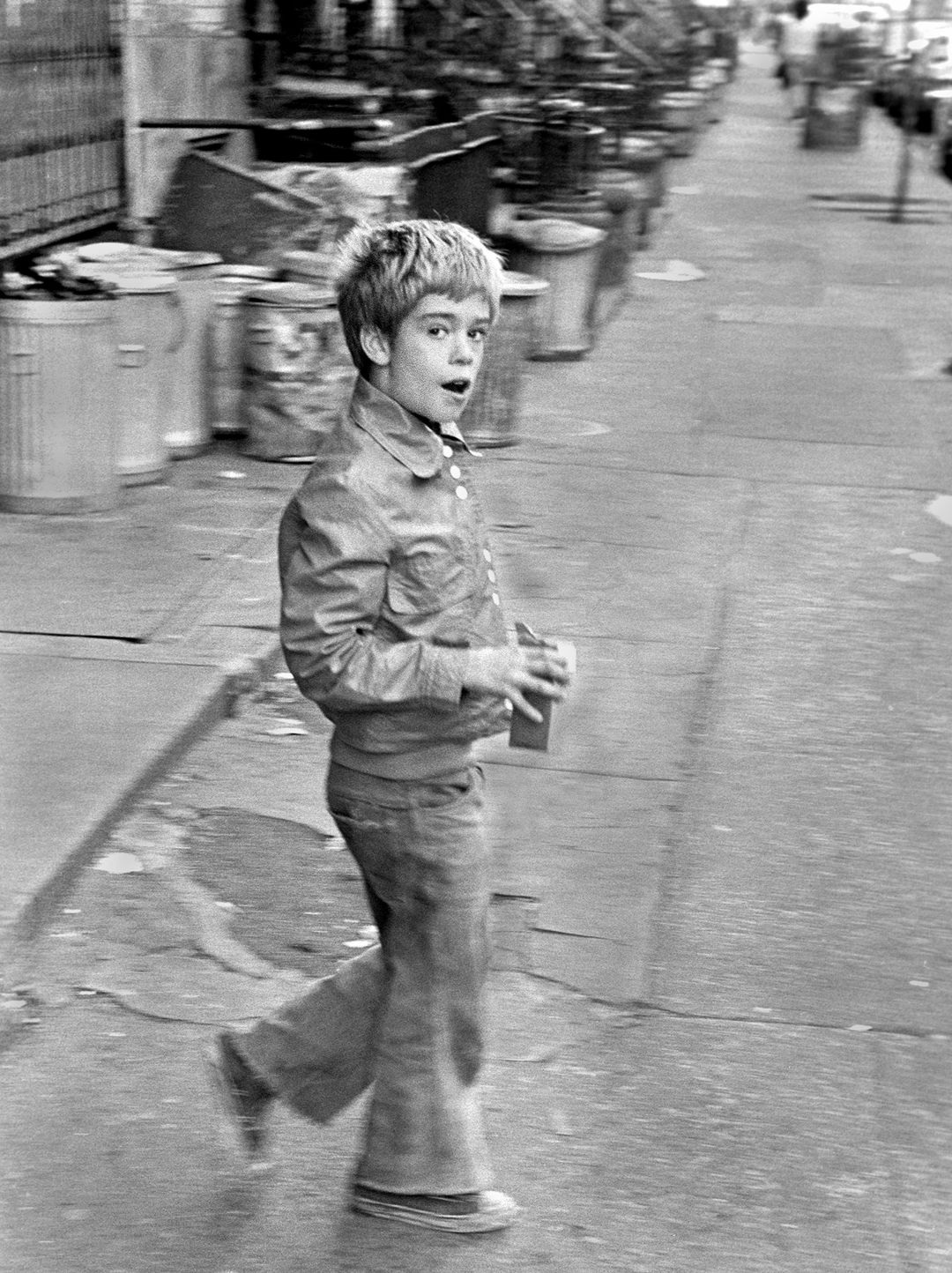
Fernando E 3rd St. 1976 – © Rich Allen
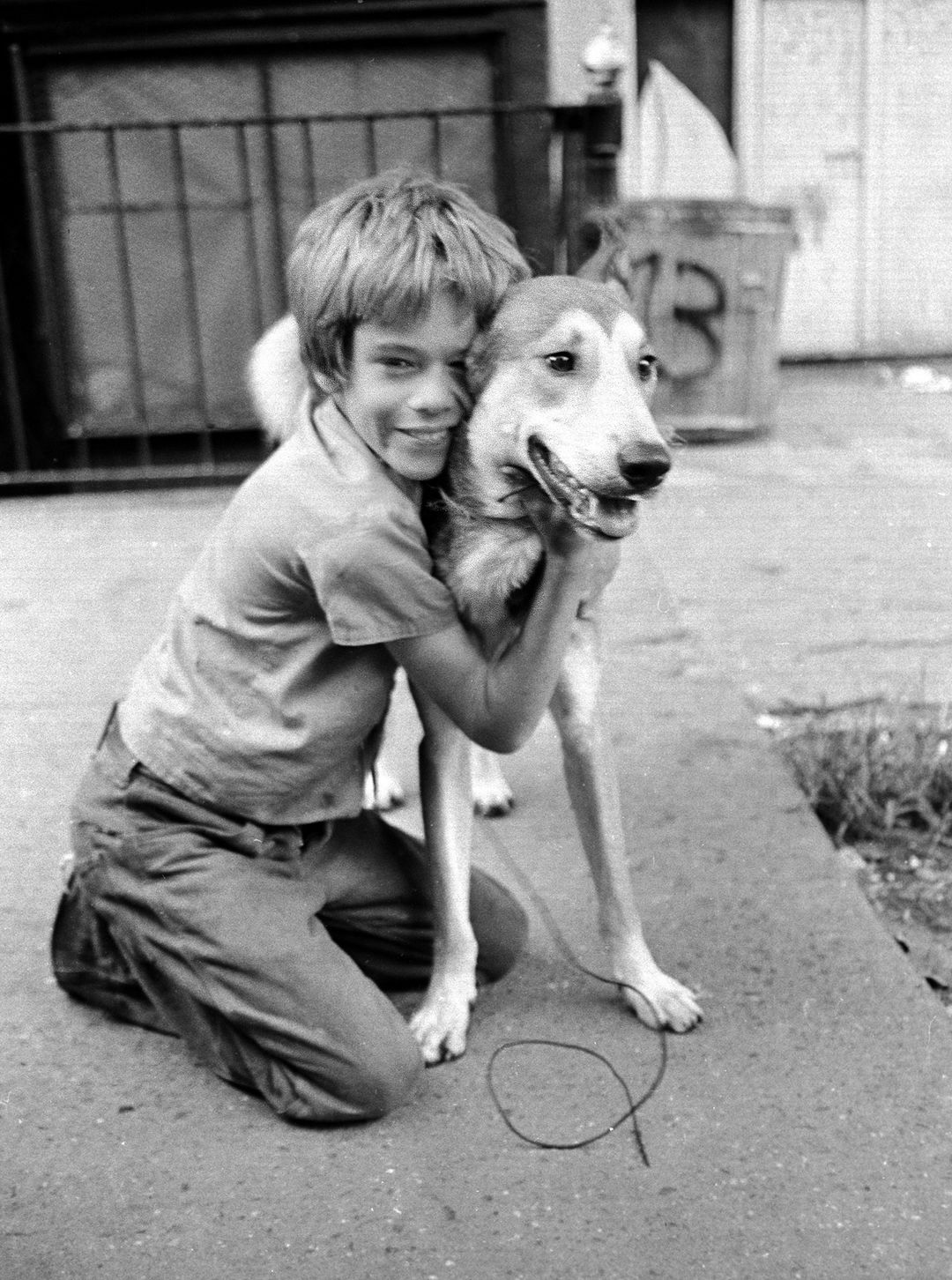
Fernando Finds His First Dog E 3rd ST 1974 – © Rich Allen
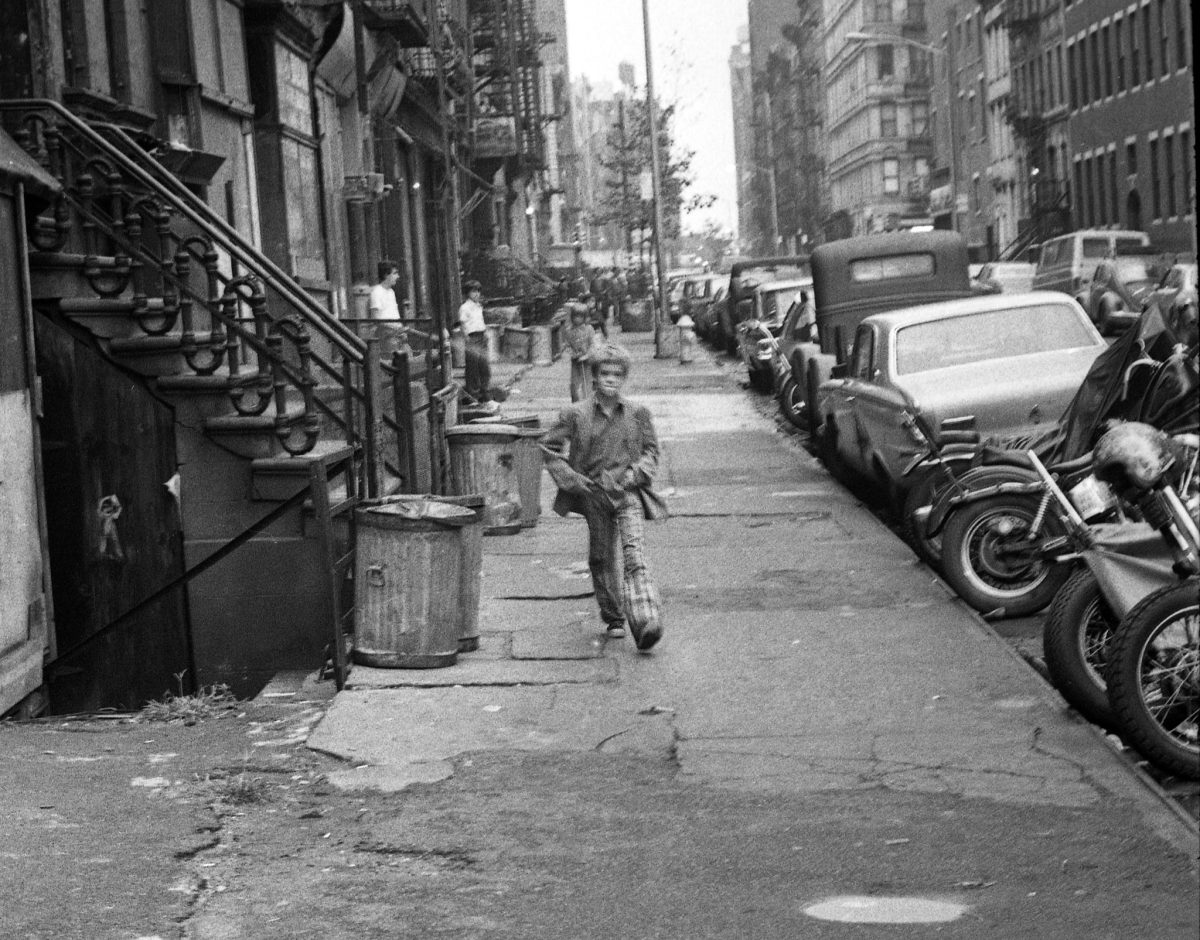
Fernando E 3rd St 1975 – © Rich Allen
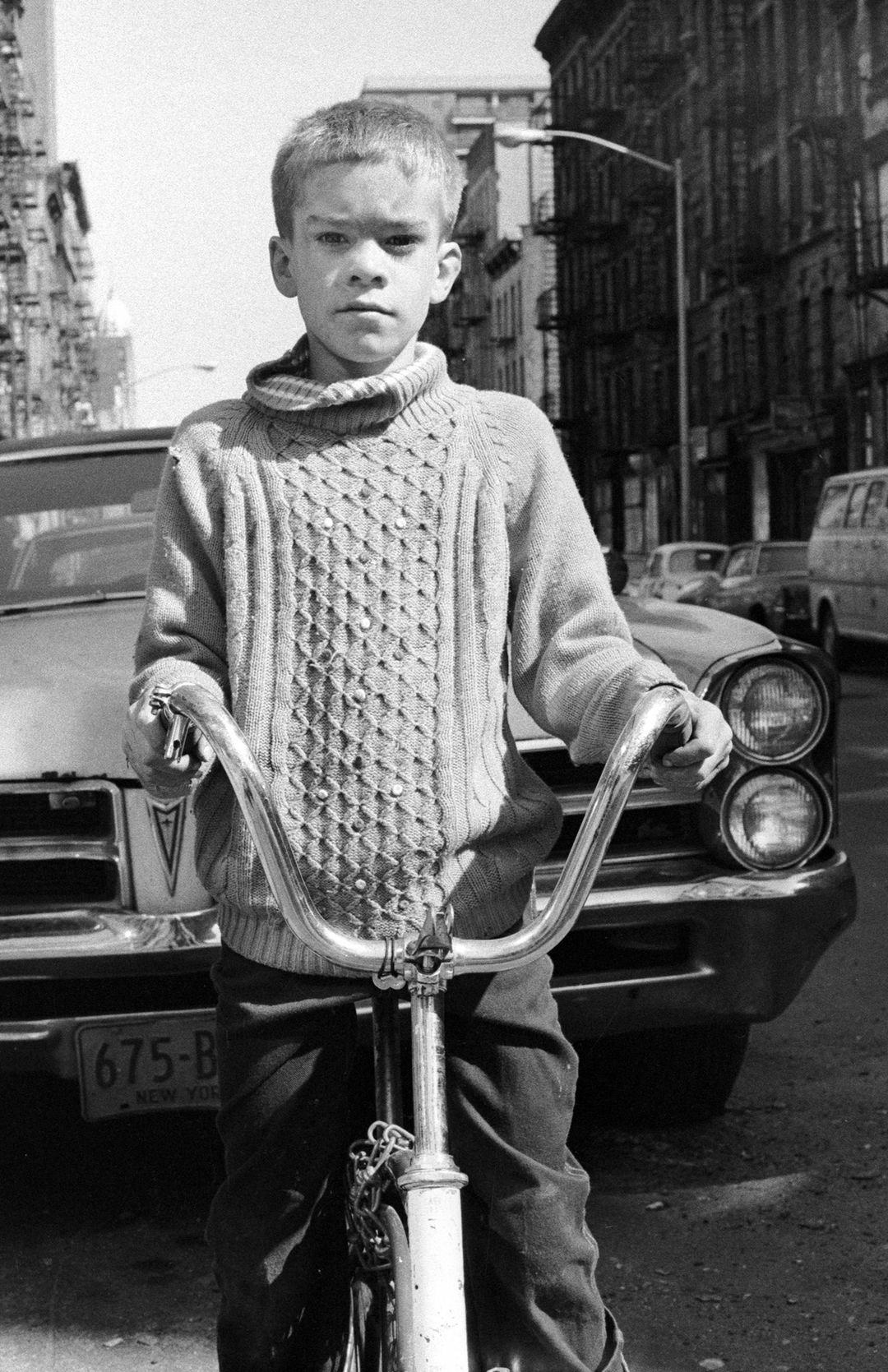
Fernando E 3rd St 1973 or 74 – © Rich Allen
The End
When I left the city I moved back to Rhode Island, where I grew up. But I’d return to NYC to work or visit, and went back to 3rd St. often. Sometimes (with Lydia Madrid’s written permission) Fernando and Orlando would take a bus to Providence to visit for a few days.
Away from any city lights the stars glowed with vivid brightness. Fernando was amazed and wanted to know: “How come the sky is lower here?” As the 80s turned to the 90s, I saw them less often. Lydia died. Fernando stopped coming to RI and I had no number for him.
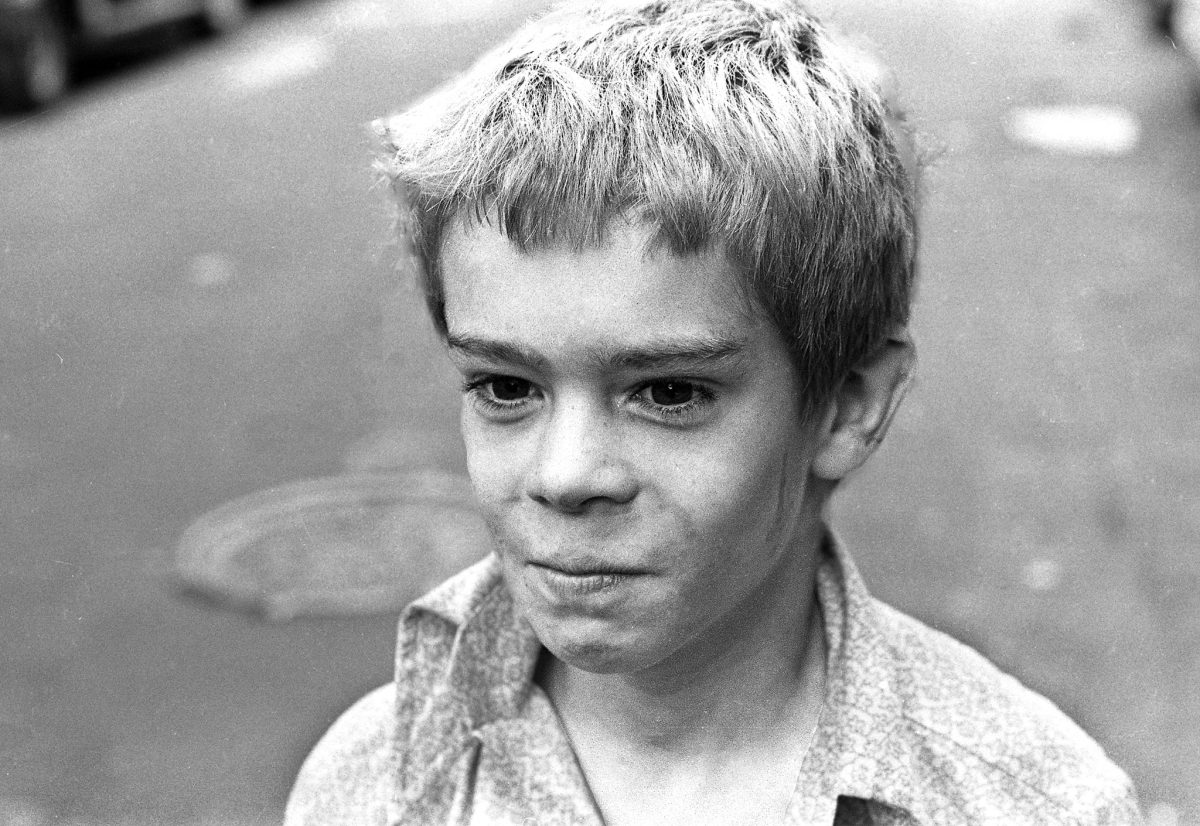
Guilty of Playing Hooky! Fernando E 3rd ST 1975 – © Rich Allen
One day I went down to 3rd St. and the only one left I knew was Estebe. He told me Fernando had died a year ago. That he’d been in California trying to start a new life but came back to 3rd St. for a visit and got into an argument. They broke it off, but Fernando, being a gentleman, turned and offered to shake hands to end the matter. That’s when he was stabbed, right around the corner from 3rd St. on 1st Avenue, knifed in the gut. He walked away, but collapsed between two cars. By the time an ambulance came he was dead. He was a sweet young man and I miss him terribly. His spirit lives in these pictures.
All images by permission of Rich Allen.
Would you like to support Flashbak?
Please consider making a donation to our site. We don't want to rely on ads to bring you the best of visual culture. You can also support us by signing up to our Mailing List. And you can also follow us on Facebook, Instagram and Twitter. For great art and culture delivered to your door, visit our shop.

